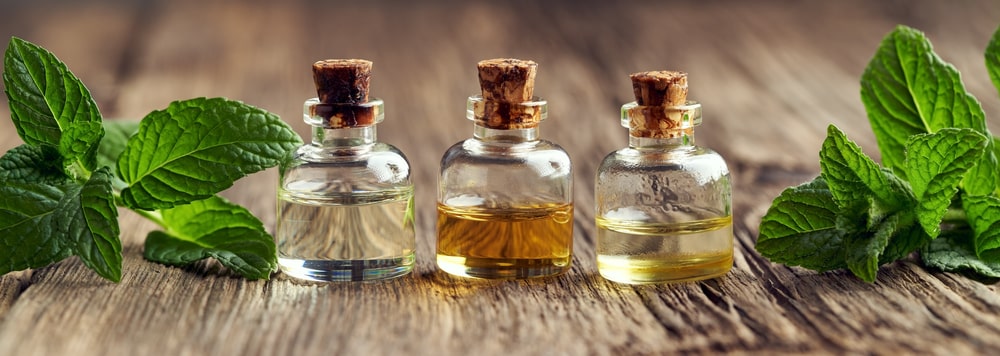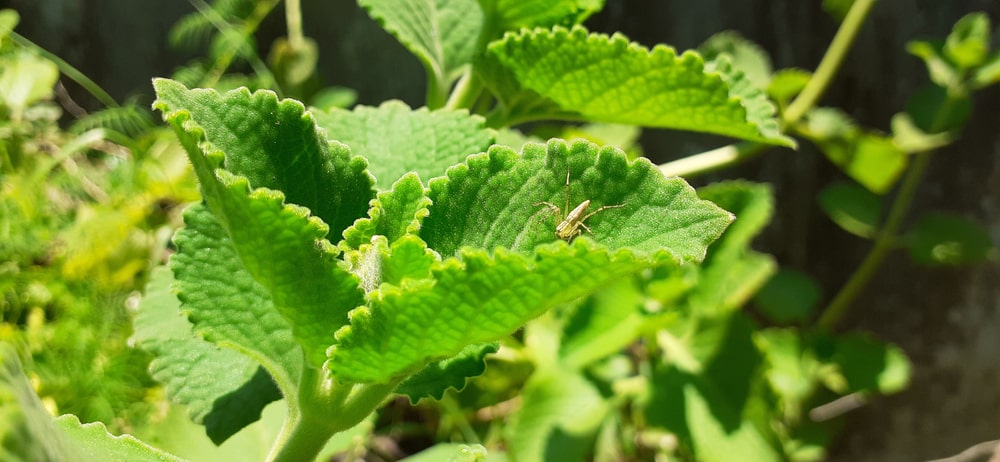Conservation of Medicinal Plants: Medicinal plant conservation strategies are based on an understanding of indigenous knowledge and practices. Conservation of medicinal plants in its bio-cultural perspective not only implies conservation of biodiversity but also provides conservation of cultural diversity. As per the world conservation strategy (1980), conservation is defined as “the management of human use of the biodiversity so that it may yield the greatest sustainable benefit to present generation while maintaining its definitions invokes two complementary components conservation and sustainability”. Many drugs contain herbal ingredients and it has been said that 80-90% of the world’s population relies on some form of non-conventional medicine, but the market demand has led to increased pressure on the natural resources that lend to the production of some of these plants. The most serious proximate threats when extracting medicinal plants generally are habitat loss, habitat degradation, global climate change, and over-harvesting. Hence highly threatened species must not be collected at all to increase their prospects of survival. There should be clear information on which plants are threatened. In such cases, the practitioners and communities should try to discover ways of using alternatives. Additionally, legislation should be put in place to ban the collection and the possession of and trade in those plants. The practitioners should be involved in the processes of conserving the threatened plants concerned. The regulation should also draw on the harvesting practices observing ethical, legal, and social rights of all those concerned in the communities where the plants are native. As per recent statistical reports, about 17,000 species of medicinal and aromatic plants are well documented and about 50,000 plant species are used globally. About 3,000 species are traded internationally and about 900 species are commercially cultivated worldwide. According to WWF (World Wide Fund for Nature), about 30 – 45% of medicinal plant species may be threatened with extinction in the wild, which means around 4000 to 10,000 plants are may be at risk. Various national and international agencies have formulated various policies and strategies for the conservation of medicinal plants. According to these strategies, the primary goals are:
- Maintenance of essential ecological processes and life support systems for human survival.
- Preservation of species and genetic diversity.
- Sustainable use of species and ecosystems which supports rural communities and also the industries.
- Maintenance and assessment of germplasm for future use.

Some agencies are:
- IUCN (The International Union for Conservation of Nature and Natural Resources): Founded in 1948.
- WWF (World Wide Fund for Nature): It is established in 1961.
- UNDP (United Nations Development Programme): It is established in 1965.
- UNEP (United Nations Environment Programme): It is established in 1972.
- WRI (World Resources Institute): It is founded in 1982.
- FRLHT (Foundation for Revitalization of Local Health Traditions): It is established in 1993.
NMPB (National Medicinal Plants Board): It is established in 2000 by the Government of India has the primary mandate of coordinating all matters relating to medicinal plants and support policies and programs for the growth of trade, export, conservation, and cultivation. The Board is located in the Department of Ayurveda, Yoga & Naturopathy, Unani, Siddha & Homeopathy (AYUSH) of the Ministry of Health & Family Welfare. According to IUCN, the number of endangered plant species is about 8500 worldwide, of which more than 250 plant species are in India. Some of the important endangered plant species are Rauwolfia serpentine, Taxus baccata, Taxus brevifolia, Santalum album, etc. Guidelines on The Conservation of Medicinal Plants (IUCN, WWF, 1993), WHO (World Health Organization) Guidelines on good agricultural and collection practices (GACP) for medicinal plants (WHO, 2003) have been established where the significance of ecology, identification, and traditional use of plants, as well as cultivation and conservation of plants both in situ and ex-situ, are strongly emphasized. The mission for the conservation of plants and their habitats are:
- To preserve wild populations of different plants species with their inherent intraspecific diversity for further evolution.
- Revitalization of social processes for transmission of traditional knowledge of health care for its wider use and applications.
The objectives are to:
- Establish a system of protected areas where special measures need to be taken to conserve biological diversity;
- Promote the protection of ecosystems, natural habitats, and the maintenance of viable populations of species in natural surroundings; and
- Develop necessary regulatory provisions for the protection of threatened species and populations.
The states like Karnataka, Tamil Nadu, Kerala, and UP are involved in the conservation of medicinal plants.
The most widely accepted scientific technologies of biodiversity conservation are the in-situ and ex-situ methods.
In-situ Conservation:
This process is also known as on-site conservation. This is the process of protecting the existing biological and genetic diversity in the best and most effective way. In this technique, wild species or stock of a biological community or endangered plant is preserved in its natural habitat either by protecting or cleaning up the habitat.
(a) Medicinal plant conservation areas: During 1997 FRLHT (Foundation for Revitalization of Local Health traditions) Bangaluru, Karnataka, in collaboration with State Forest Departments established a coordinated network of in-situ medicinal plants conservation areas (around 30 Nos.) located within the protected areas of Kerala, Tamil Nadu, and Karnataka.
(b) Sacred Groves: These are the combinations of forests whose entire biodiversity along with other natural resources is conserved by the forest village communities. This method provides the conservation of forest biodiversity, conservation of threatened taxa, etc.
(c) Conservation of Ethnomedicinal plants: There are more than 6000 plant species are exist with their medicinal values but do not have scientific evidence, which is traditionally passed on orally through generations. Those plants are required to conserve for future uses and to know their therapeutic activities through scientific research.

Ex-situ Conservation:
It is a process of protecting endangered plants from threatened habitat and placing them in a new location which is in the wild area or within them of humans i.e., by cultivating and maintaining plants in biotic gardens, parks, other suitable sites.
(a) Ethnomedicinal plant gardens: It is an important process for creating a network of regional and sub-regional ethnomedicinal plant gardens which contain all the ethnic communities’ medicinal plants from the different regions of India. These gardens provide ethnomedicinal history and their detailed knowledge and also act as regional repositories of our culture.
(b) Gene banks: Gene banks are a type of bio-repository that preserves genetic material. In plants, this is by freezing cuts from the plant or stocking the seeds. In plants, it is possible to unfreeze the material and propagate it. Gene banks are used to store and conserve the plant genetic resources of major crop plants and their crop wild relatives that result in the conservation of agricultural biodiversity. Various types of gene banks include seed banks, tissue banks, Cryobank, pollen banks, field gene banks, etc.
(c) Nursery or demonstration plots: This is one of the important methods for the conservation of traditional medicinal plants and to get the proper idea about the history of the medicinal plants. These nurseries are the primary sources of supply of plants, seed materials, etc. The forest departments, agricultural extension agencies, various non Governmental Organizations (NGOs) should be encouraged to establish various nurseries and allot plots for growing medicinal plants in existing ones.
Some of the important National institutions for Agricultural Research:
- Central Arid Zone Research Institute (Czari), Jodhpur-3, Rajasthan.
- Central Plantation Crops Research Institute, Kasaragod, Kerala. Central Research Institute for Dryland Agriculture, Hyderabad, A.P.
- Central Rice Research Institute, Cuttack, Orissa.
- Central Soil and Water Conservation Research and Training Institute, Dehradun, Uttaranchal.
- Central Soil Salinity Research Institute, Karnal, Haryana.
- Central Tobacco Research Institute, Rajamundry, AP.
- Indian Agricultural Research Institute, New Delhi.
There are some legal protection and conservation rules for medicinal plants by which farmers are benefited in India such as:
Plant Variety Protection Act 1970 (PVPA): It is an intellectual property statute in the USA. The PVPA gives breeders up to 25 years of exclusive control over the new, distinct, uniform, and stable sexually reproduced or tuber propagated plant varieties. It is a right for a limited period of legal control to breeders of sexually reproduced or tuber propagated plant varieties.
Farmer’s Right Act 2001: The Protection of Plant Variety and Farmers Right Act, 2001 (PPVFR Act) is an Act of the Parliament of India. This act was enacted to provide for the establishment of an effective system for the protection of various plant varieties, the rights of farmers and plant breeders and to encourage the development and cultivation of new varieties of plants. Farmers are entitled to save, use, sow, re-sow, exchange or sell their farm produce including seed of a registered variety in an unbranded manner. Farmers are exempted from payment of any fee in any proceedings under this Act. An annual fee is required to pay every year for maintaining the registration and the renewal fee is also to pay for the extended period of registration.

Duration of Registration:
- For trees and vines (Perennials): 18 years from the date of registration of the variety.
- For other crops (Annuals): 15 years from the date of registration of the variety.
- For extant varieties: 15 years from the date of notification of that variety by the Central Government under section 5 of the Seeds Act, 1966.
Exemptions provided by the Act:
- Farmers’ Exemption: A farmer shall be entitled to produce, save, use, sow, re-sow, exchange, share or sell his farm produce including seed of a variety protected under this Act.
- Researcher’s Exemption: (i) the use of registered variety for experimenting. (ii) the use of variety as an initial source of variety to create other varieties.
Make sure you also check our other amazing Article on : Factor affecting Harvesting
